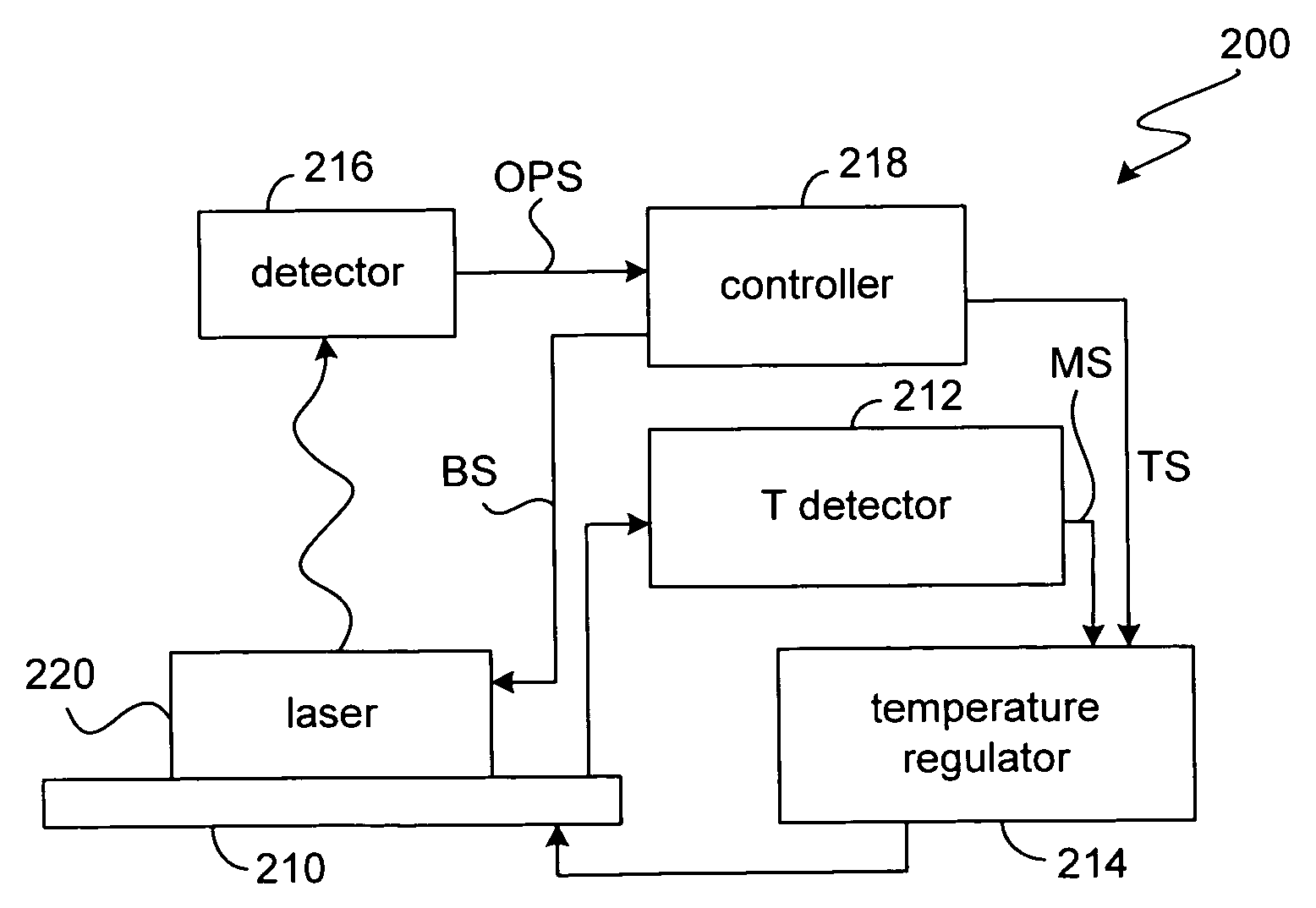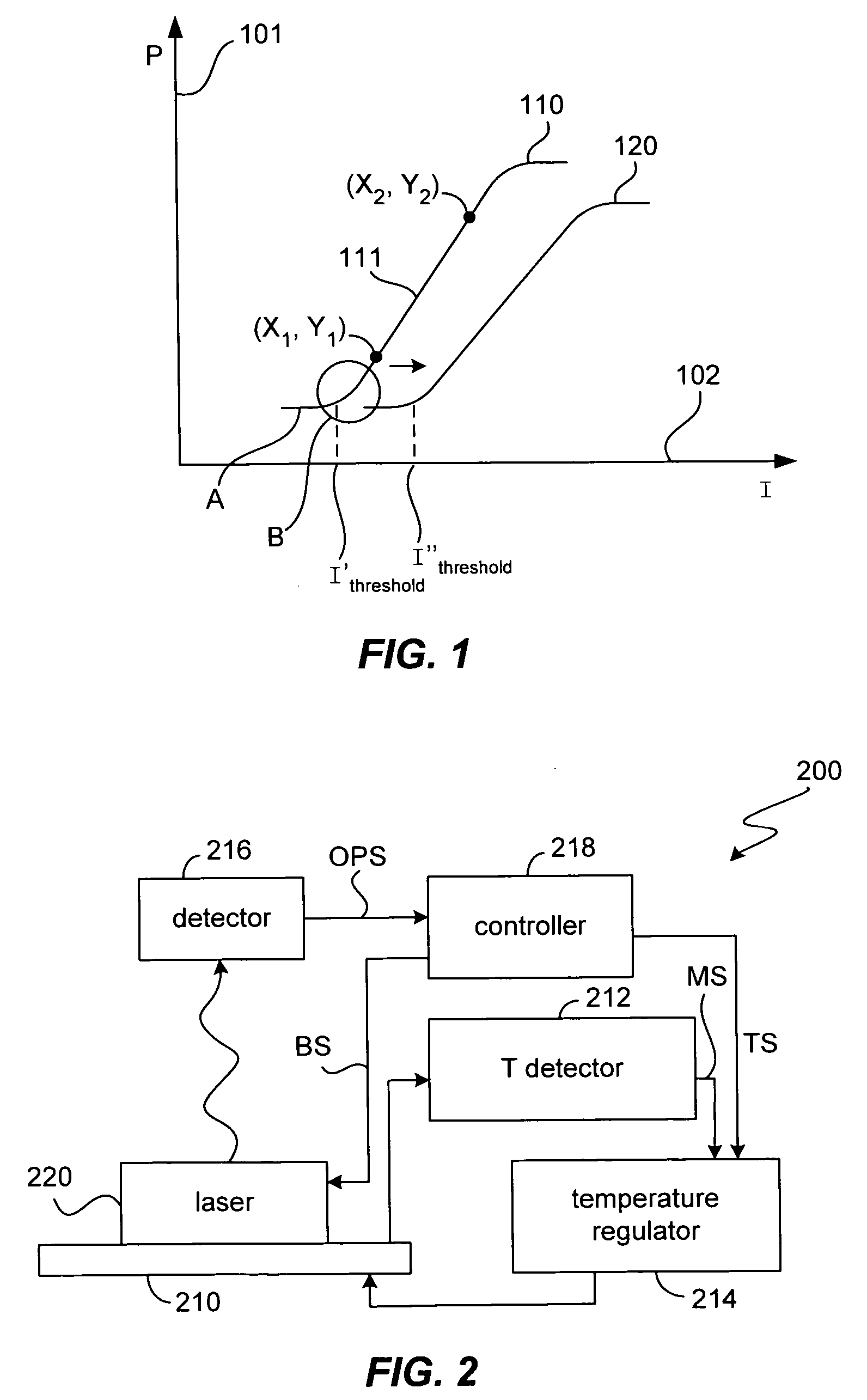Laser trim and compensation methodology for passively aligning optical transmitter
a passive alignment and optical transmitter technology, applied in electromagnetic transmission, semiconductor lasers, electromagnetic transmission, etc., can solve the problems of invalidating calibration and operating points set at one temperature at other temperatures, and fluctuating temperatures. significant,
- Summary
- Abstract
- Description
- Claims
- Application Information
AI Technical Summary
Benefits of technology
Problems solved by technology
Method used
Image
Examples
Embodiment Construction
[0031] The present invention has been particularly shown and described with respect to certain embodiments and specific features thereof. The embodiments set forth hereinbelow are to be taken as illustrative rather than limiting. It should be readily apparent to those of ordinary skill in the art that various changes and modifications in form and detail may be made without departing from the spirit and scope of the invention.
[0032] One aspect of the invention teaches methodologies for establishing a trim and compensation scheme for a laser device to be used in an optical link. In one aspect, a laser can be trimmed (i.e., set-up to have initial laser optical performance characteristics that fall within a pre-determined specification) using previously obtaining laser performance information in combination with a set of user specified performance parameters. In another aspect, the invention encompasses methodologies for determining and applying a temperature compensation scheme that c...
PUM
 Login to View More
Login to View More Abstract
Description
Claims
Application Information
 Login to View More
Login to View More - R&D
- Intellectual Property
- Life Sciences
- Materials
- Tech Scout
- Unparalleled Data Quality
- Higher Quality Content
- 60% Fewer Hallucinations
Browse by: Latest US Patents, China's latest patents, Technical Efficacy Thesaurus, Application Domain, Technology Topic, Popular Technical Reports.
© 2025 PatSnap. All rights reserved.Legal|Privacy policy|Modern Slavery Act Transparency Statement|Sitemap|About US| Contact US: help@patsnap.com



